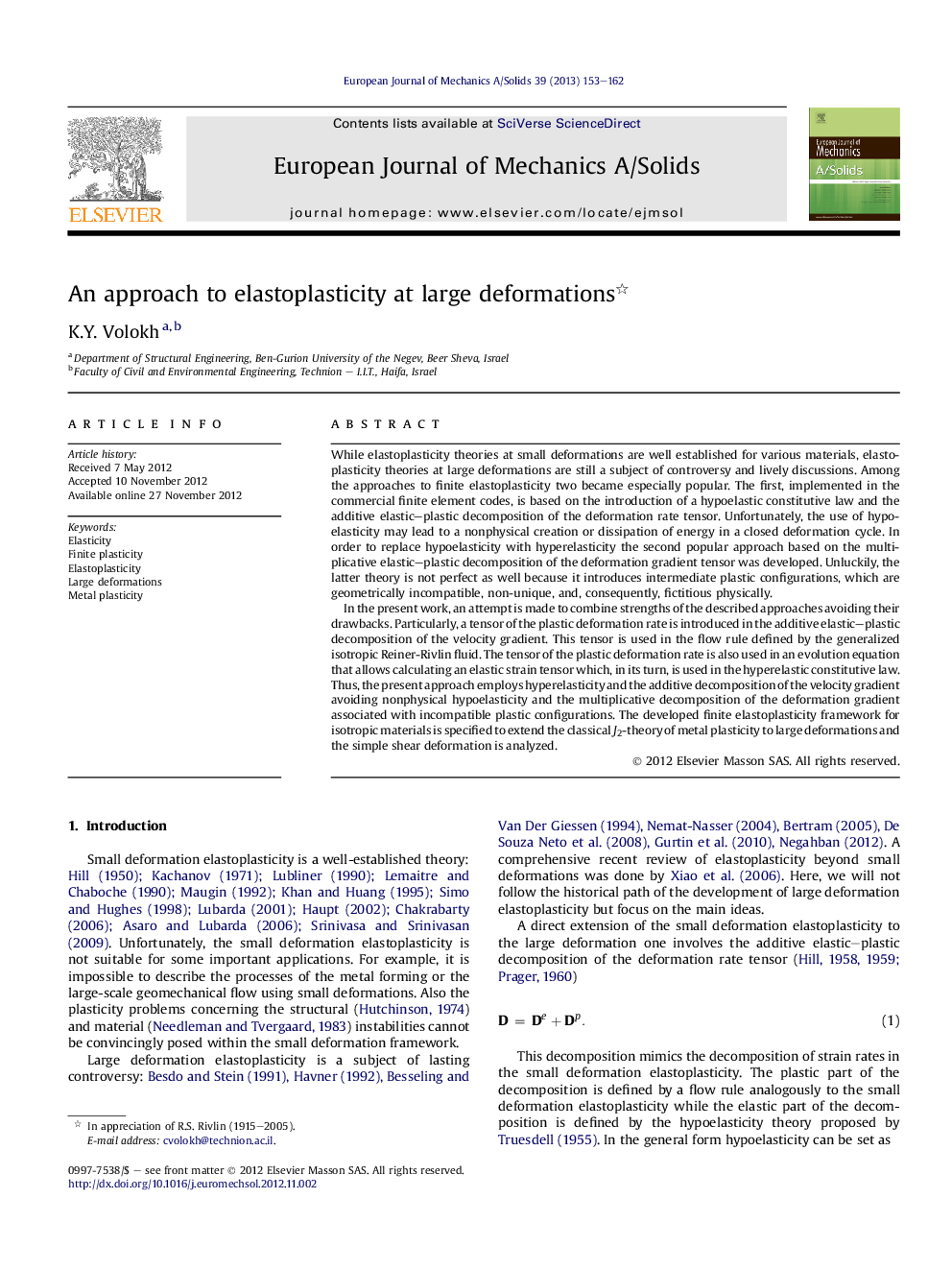| کد مقاله | کد نشریه | سال انتشار | مقاله انگلیسی | نسخه تمام متن |
|---|---|---|---|---|
| 772406 | 1463208 | 2013 | 10 صفحه PDF | دانلود رایگان |

While elastoplasticity theories at small deformations are well established for various materials, elastoplasticity theories at large deformations are still a subject of controversy and lively discussions. Among the approaches to finite elastoplasticity two became especially popular. The first, implemented in the commercial finite element codes, is based on the introduction of a hypoelastic constitutive law and the additive elastic–plastic decomposition of the deformation rate tensor. Unfortunately, the use of hypoelasticity may lead to a nonphysical creation or dissipation of energy in a closed deformation cycle. In order to replace hypoelasticity with hyperelasticity the second popular approach based on the multiplicative elastic–plastic decomposition of the deformation gradient tensor was developed. Unluckily, the latter theory is not perfect as well because it introduces intermediate plastic configurations, which are geometrically incompatible, non-unique, and, consequently, fictitious physically.In the present work, an attempt is made to combine strengths of the described approaches avoiding their drawbacks. Particularly, a tensor of the plastic deformation rate is introduced in the additive elastic–plastic decomposition of the velocity gradient. This tensor is used in the flow rule defined by the generalized isotropic Reiner-Rivlin fluid. The tensor of the plastic deformation rate is also used in an evolution equation that allows calculating an elastic strain tensor which, in its turn, is used in the hyperelastic constitutive law. Thus, the present approach employs hyperelasticity and the additive decomposition of the velocity gradient avoiding nonphysical hypoelasticity and the multiplicative decomposition of the deformation gradient associated with incompatible plastic configurations. The developed finite elastoplasticity framework for isotropic materials is specified to extend the classical J2-theory of metal plasticity to large deformations and the simple shear deformation is analyzed.
► New finite plasticity framework is considered.
► No hypo-elasticity or the multiplicative decomposition is used.
► The theory is specialized for J2 finite plasticity.
► Simple shear problem is considered.
► Comparison with the multiplicative decomposition approach is presented.
Journal: European Journal of Mechanics - A/Solids - Volume 39, May–June 2013, Pages 153–162